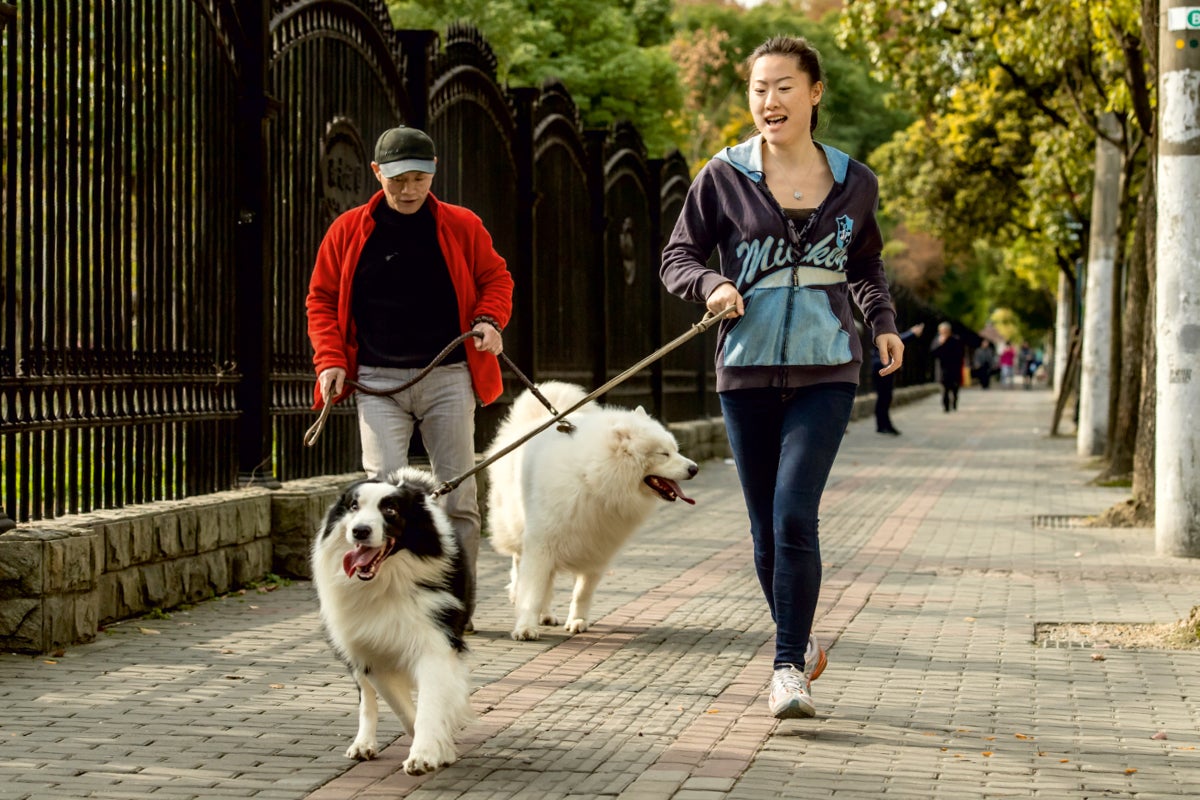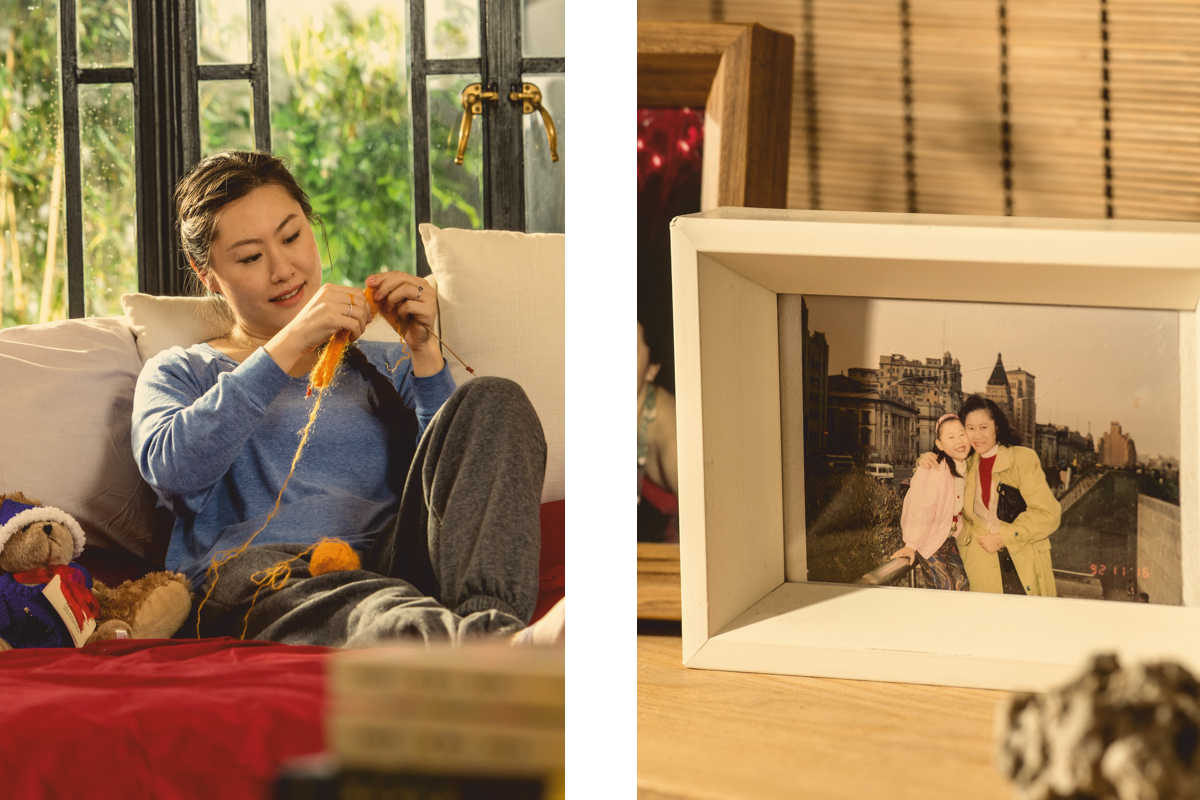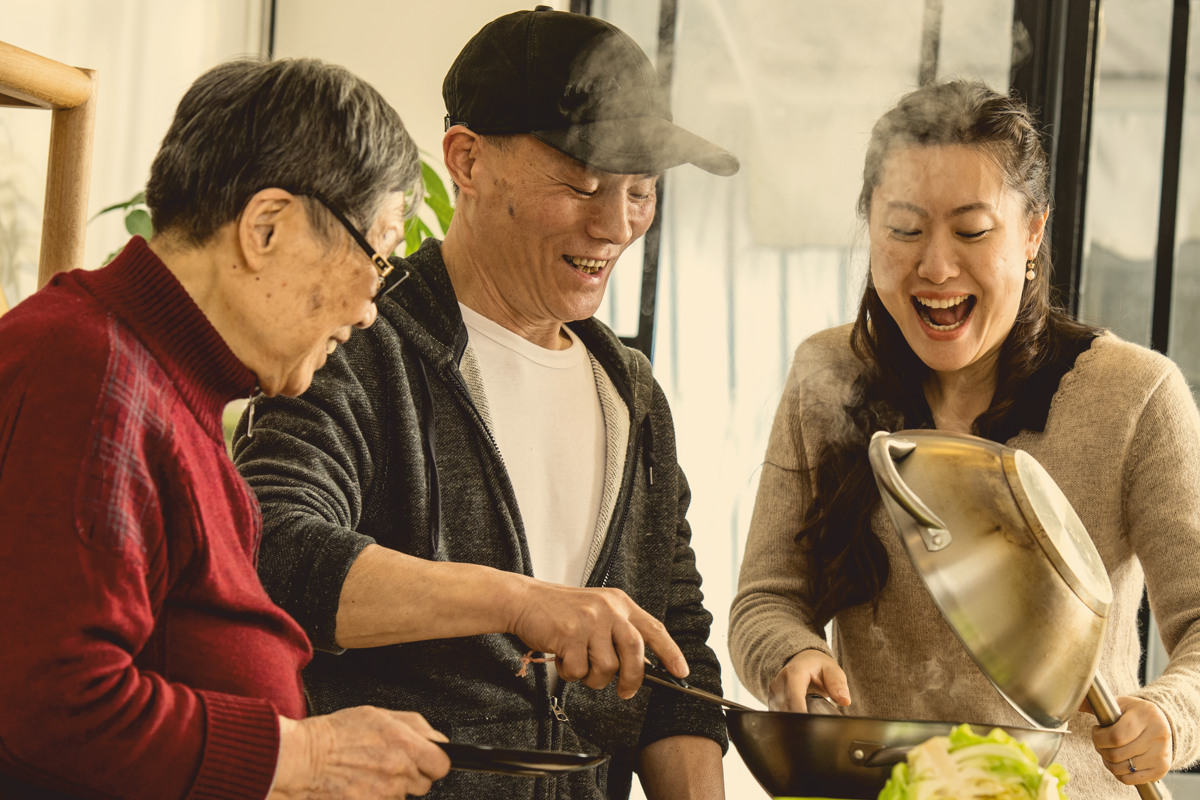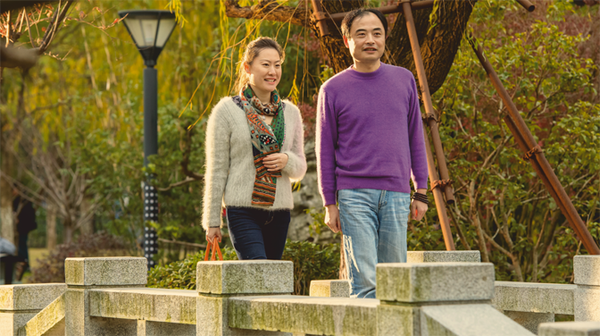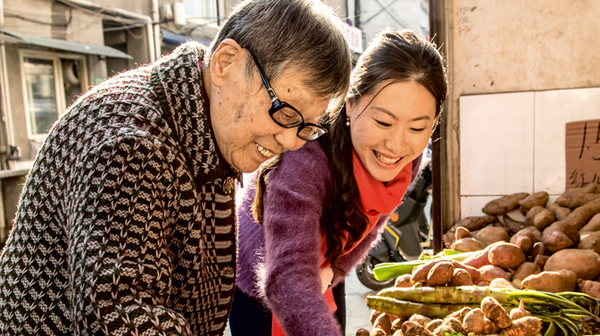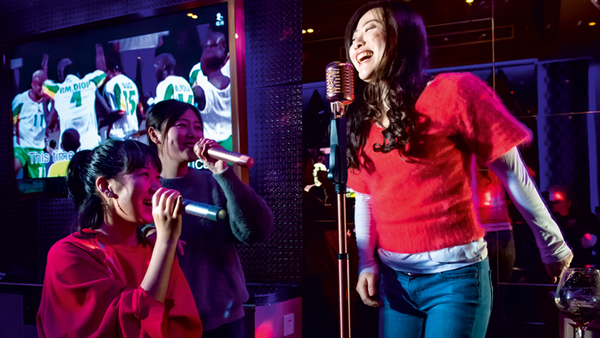Living in the moment
I live with my father in the district of Baoshan. Baoshan is in the north of Shanghai, 15 kilometers away from downtown. My father and I live in a three-room apartment in a large apartment complex. We share our apartment with Nannan, a Border Collie, and Milo, a Samoyed – a Siberian sled and herding dog. The two of them keep us pretty busy. Now that my father is retired, he often cooks for us. Sometimes my grandmother comes over and we spend a nice evening together.
In 2007, I went to the hospital with my mother for a routine check-up. “You have a lump,” the doctor said. “It’s large. It doesn’t look good.” I felt like someone had pulled the rug out from under my feet. The diagnosis: ovarian cancer. Cancer runs in our family. My aunt also died from ovarian cancer.
My mother was diagnosed with stage II cancer. We didn’t know how much time we would still have with each other. She was a strong woman. She held on for seven years, until the summer of 2014. For the first few years, I was really scared. How could we carry on without her? I tried to reassure myself that everything would be okay. At some point,
however, I had to face the facts.
But instead of endlessly worrying about what would happen after she was gone, I learned to appreciate the time we had left. I had just finished my English degree and moved back home. I hardly ever went out, spending every free moment with her. We had never been as close as we were during those years. We watched films and comedy shows together, played mahjong and went on trips to the countryside. Our favorite activity together was knitting. Every few months, we would decide which sweaters we wanted to knit next and with which colors we wanted to experiment. This meant that my mother always had a goal she could work towards.
She had two operations in 2007 and 2009, but the cancer couldn’t be stopped. Every three weeks, I went with her to the hospital for chemotherapy. Later, I gave her daily injections of white blood cells at home. In early 2014, her condition worsened. For my sake, my mother wanted to hold on for as long as she could. “You are still so young,” she said. She would have liked to see me get married and to have had grandchildren.
For years, I had prepared myself for the day when her body would give up the fight. When the day came, I was collected and calm inside. Her illness has made me very aware of how important our health is. At the same time, it also taught me to enjoy life for as long as possible. Through my mother, I have learned to follow my heart, to take care of myself, and to do what makes me happy. I think that is all that matters, in the end.
After my mother’s death, I felt as if I’d lost my bearings. Over time, it became clear to me that I could also offer the love I’d given her to other people. A Swiss musician I met through friends put me in touch with the Non-Governmental Organization (NGO) “Heart to Heart,” which supports children with heart defects whose parents cannot afford operations. Here in Shanghai, we work together with two state hospitals, where we have furnished playrooms for the children. I visit the children there on weekends, bring them things they need, and play with them.
It makes me happy to be with the children before and after their operations, to spend time with them, to pay attention to them, and to watch them get healthy. Children handle a serious illness in a way that is completely different from the way adults deal with it. They don’t ask, “Why me?” They don’t feel self-pity or despair. Their bodies simply hurt, that’s all. But no matter how much it hurts, their innocent enjoyment of life remains. I think that we, as adults, can learn a lot from them.
„I not only learned how to knit from my mother, but also to enjoy life and to do what really makes me happy. My memory of her is very vivid. When I miss her, I look at old photographs. But her love is not gone – she is with me, and I know that I can share her love with other people, too.“
When cells become diseased - Infusion therapy against cancer
Incredible but true: An adult human body consists of up to 100 trillion cells. Every second, 50 million cells die in the body and are replaced by just as many new ones – a miracle that occurs every day in each human being. However, what if gene changes turn into cell division? Many such small mutations cause cells to change abnormally. Usually, the body is able to repair these mutations. Only when impacted cells divide in an uncontrolled manner so that nodules and growths are formed, do we speak of cancer.
Higher age - higher prevalence of cancer
In 2012, 14 million people worldwide were diagnosed and fell ill to cancer. By 2025, the annual number of new cases could rise to 20 million. This is mainly due to higher life expectancy. Elderly people are usually more affected by cancer than younger people. Data also shows that cancer rates are rising sharply in countries like Africa, Asia and Latin America. This is being attributed to lifestyle changes. People eat more unhealthy foods such as red meats and prepared foods, and they move less. Smoking is also very common in many of these countries and air pollution is a growing problem. Combustion gases, i.e., polycyclic aromatic hydrocarbons, are highly carcinogenic. In China, for example, around 12,000 people are diagnosed with cancer every day. Ovarian cancer is ranked ninth in frequency. It is particularly dangerous because it is often recognized in the later stages of development.
In recent years, medicine has made tremendous progressin the fight against cancer. For example, more than two-thirds of all patients diagnosed with cancer died in Germany in 1980. Today, more than half of all cancer patients can hope for lasting remission. Therapy usually follows a similar pattern. The first step is the operation: Doctors remove the diseased tissue. The second step is radiation therapy. Radiation damages the cells’ genetic make-up and the tumors become smaller or disappear. As a third step, chemotherapy is then used to treat the patient’s entire body. Drugs distributed in the organs destroy scattered tumor cells. Often, a combination of surgery, radiation therapy and chemotherapy is recommended.
The active substances of chemotherapy, called the cytostatics, are extremely aggressive, must be accurately dosed and must not come into contact with the skin or the respiratory tract of the hospital staff. B. Braun offers an extensive infusion therapy system to administer medications in a controlled manner and as comfortable as possible for the patient. It is painful for the patient when the doctor punctures the vein for each medication administration – at the same time the risk of infection increases. This is why the physician often places an implantable port below the patient’s clavicle. This is a small chamber with a catheter, that flows into a vein near the heart. Doctors now administer cytostatics via the port with a special needle. Celsite® port catheter systems from B. Braun have a compact flat design and have a minimal impact on the patient’s freedom of movement. Many other features, such as the X-ray visible CT marking, help facilitate treatment. The connection between the infusion container and the port is made secure by our Cyto-Set® Infusomat® Space tube system, which is made of a special crackresistant material and can be easily vented. The Infusomat® Space pump reduces programming errors, because it can be operated intuitively. The pump also has a large drug database, which helps hospital staff determine the right dosage.
Oral nutrition or feeding tube
Swallowing difficulties, nausea and vomiting are often a result of chemotherapy. Antiemetics from B. Braun, i.e., medicines for nausea and vomiting, alleviate these symptoms. If patients have difficulty chewing and swallowing food, enteral nutrition is recommended. With Nutricomp®, B. Braun offers a range of high-calorie enteral nutrition products that vary in their nutrient composition and suit patients’ individual needs. If the patient cannot be sufficiently fed in this way, nutrients must be supplied via a feeding tube. B. Braun has developed a comprehensive offering, including a wide selection of feeding tubes and enteral nutrition products.
Many cancer patients prefer to receive care at home. B. Braun not only develops suitable products for home care and therapy, but also offers comprehensive services at the interface between clinic and home care. Case managers from B. Braun analyze the patient’s needs, then manage the necessary measures in close coordination with the patients, relatives, attending physicians and nursing staff, in an effort to ensure complete care. Whether at home or in the clinic, B. Braun is committed to the best patient care possible.
